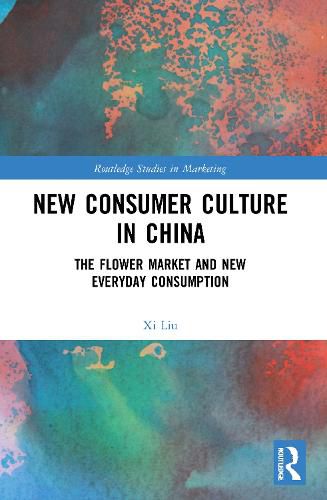Readings Newsletter
Become a Readings Member to make your shopping experience even easier.
Sign in or sign up for free!
You’re not far away from qualifying for FREE standard shipping within Australia
You’ve qualified for FREE standard shipping within Australia
The cart is loading…






This book looks at the recent emergence of "new ordinary consumption," in urban China and defines new ordinary consumption as a consumer practice in which people routinely integrate products and items, traditionally reserved for special occasions, into their daily lives, to accentuate their own well-being.
The book, through the case study on the adoption of cut flowers and upscaling non-floral goods, provides insights on how deal proneness and high price sensitivity pose challenges to many market retailers. It also proposes how to go about resolving these challenging issues in retail through the alteration of perceived reasons to consume. The author also examined social media marketing narrative that two direct-to-consumer floral goods sellers used, to guide consumers away from the social and cultural baggage of consumption, thereby giving more consideration to products reshaping consumers' motivation, and driving the purchase. Heeding the findings of floral startups that awakened consumers' aspirations to redefine their everyday personal lives, and making such aspirations a profitable business, this interesting case study suggests that it is time to revisit the appeal of conspicuous consumption in the present-day Chinese markets.
Anyone interested to learn more about the Chinese consumers and their novel consumption habits would find the book a useful reference.
$9.00 standard shipping within Australia
FREE standard shipping within Australia for orders over $100.00
Express & International shipping calculated at checkout
This book looks at the recent emergence of "new ordinary consumption," in urban China and defines new ordinary consumption as a consumer practice in which people routinely integrate products and items, traditionally reserved for special occasions, into their daily lives, to accentuate their own well-being.
The book, through the case study on the adoption of cut flowers and upscaling non-floral goods, provides insights on how deal proneness and high price sensitivity pose challenges to many market retailers. It also proposes how to go about resolving these challenging issues in retail through the alteration of perceived reasons to consume. The author also examined social media marketing narrative that two direct-to-consumer floral goods sellers used, to guide consumers away from the social and cultural baggage of consumption, thereby giving more consideration to products reshaping consumers' motivation, and driving the purchase. Heeding the findings of floral startups that awakened consumers' aspirations to redefine their everyday personal lives, and making such aspirations a profitable business, this interesting case study suggests that it is time to revisit the appeal of conspicuous consumption in the present-day Chinese markets.
Anyone interested to learn more about the Chinese consumers and their novel consumption habits would find the book a useful reference.